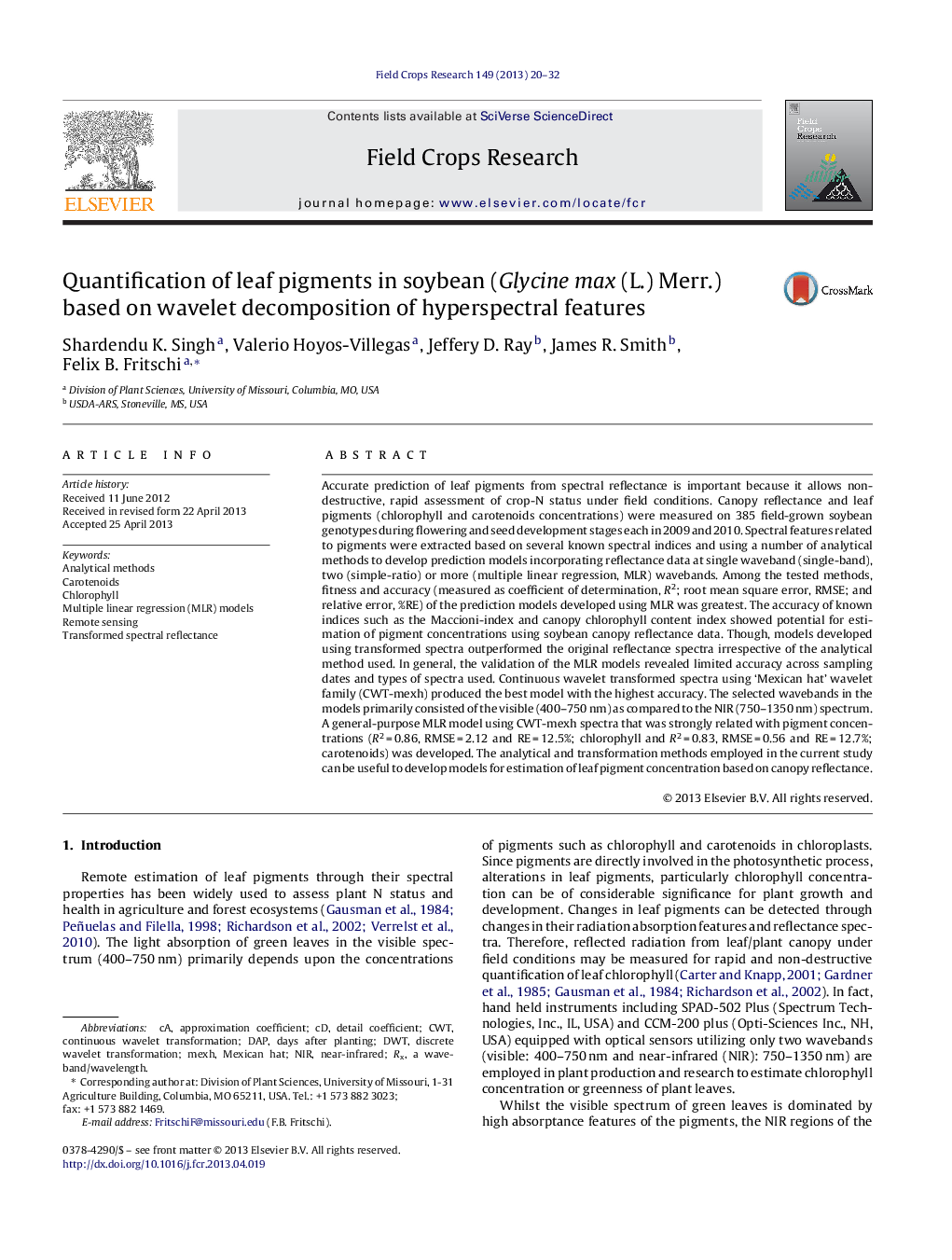| Article ID | Journal | Published Year | Pages | File Type |
|---|---|---|---|---|
| 6375230 | Field Crops Research | 2013 | 13 Pages |
Abstract
Accurate prediction of leaf pigments from spectral reflectance is important because it allows non-destructive, rapid assessment of crop-N status under field conditions. Canopy reflectance and leaf pigments (chlorophyll and carotenoids concentrations) were measured on 385 field-grown soybean genotypes during flowering and seed development stages each in 2009 and 2010. Spectral features related to pigments were extracted based on several known spectral indices and using a number of analytical methods to develop prediction models incorporating reflectance data at single waveband (single-band), two (simple-ratio) or more (multiple linear regression, MLR) wavebands. Among the tested methods, fitness and accuracy (measured as coefficient of determination, R2; root mean square error, RMSE; and relative error, %RE) of the prediction models developed using MLR was greatest. The accuracy of known indices such as the Maccioni-index and canopy chlorophyll content index showed potential for estimation of pigment concentrations using soybean canopy reflectance data. Though, models developed using transformed spectra outperformed the original reflectance spectra irrespective of the analytical method used. In general, the validation of the MLR models revealed limited accuracy across sampling dates and types of spectra used. Continuous wavelet transformed spectra using 'Mexican hat' wavelet family (CWT-mexh) produced the best model with the highest accuracy. The selected wavebands in the models primarily consisted of the visible (400-750Â nm) as compared to the NIR (750-1350Â nm) spectrum. A general-purpose MLR model using CWT-mexh spectra that was strongly related with pigment concentrations (R2Â =Â 0.86, RMSEÂ =Â 2.12 and REÂ =Â 12.5%; chlorophyll and R2Â =Â 0.83, RMSEÂ =Â 0.56 and REÂ =Â 12.7%; carotenoids) was developed. The analytical and transformation methods employed in the current study can be useful to develop models for estimation of leaf pigment concentration based on canopy reflectance.
Keywords
Related Topics
Life Sciences
Agricultural and Biological Sciences
Agronomy and Crop Science
Authors
Shardendu K. Singh, Valerio Hoyos-Villegas, Jeffery D. Ray, James R. Smith, Felix B. Fritschi,
